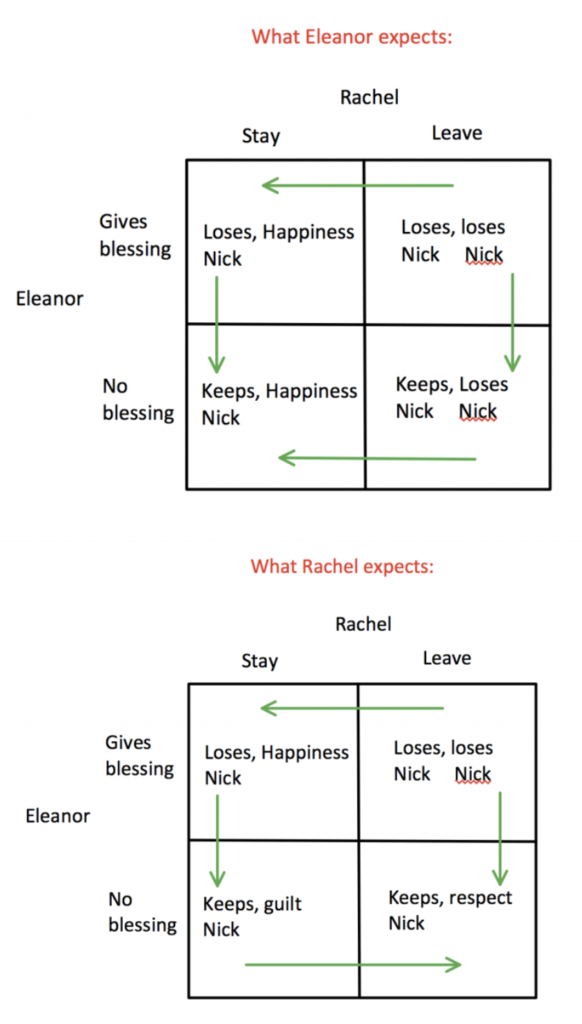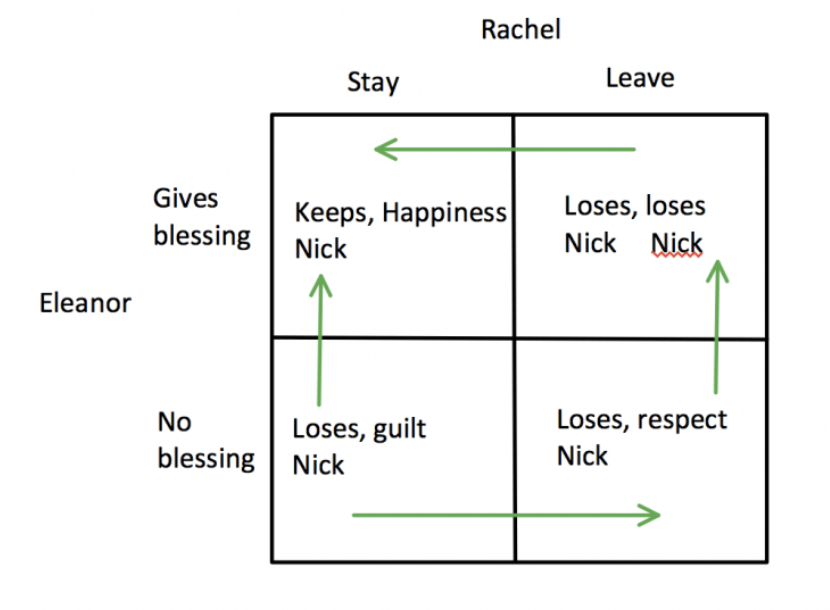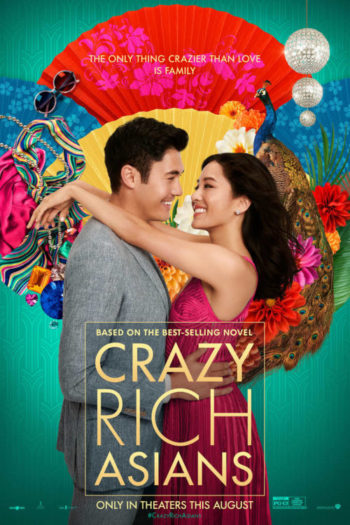Warning: Spoiler alert!
As some of you may remember, the movie ‘Crazy Rich Asians’ is about a Chinese-American economist from New York named Rachel Chu who visits Singapore with her boyfriend, Nick Young. While in Singapore, Rachel meets Nick’s crazy rich Singaporean family, including his disapproving mother, Eleanor.
In the climax of Crazy Rich Asians, we see that Rachel plays mahjong with Eleanor. This scene is crucial in determining whether Rachel gets to marry Nick and live happily ever after. Since Rachel teaches game theory as an economics professor, the decisions she makes in this part of the movie are carefully plotted to maximize her payoff. Both characters are also extremely smart and strategic players, which would mean that analyzing their choices on a payoff matrix would turn out to be very interesting (especially in the midst of exam season).
The payoff matrices differ before and after the scene where Rachel and Eleanor play mahjong. Before they played together, Rachel had two choices – stay with Nick or leave Nick. Similarly, Eleanor also had two choices where she could either choose to give the couple her blessings or not do so.
We can notice that if Rachel stays and Eleanor gives her blessings, Rachel’s payoff is a happy marriage to the love of her life. However, Eleanor would lose her son because he’d stay in America with Rachel. If Rachel leaves and Eleanor chooses to give her blessing (a very unlikely scenario), both women lose Nick because presumably Nick will go back to New York City to find Rachel.
Now, this is the interesting part. It’s clear that Eleanor has an erroneous expectation of what Rachel’s payoffs will be since she does not see Rachel as deserving and does not understand how much Rachel loves her son. Without her blessing, Eleanor thinks that Rachel’s payoff for staying is happiness since she gets to marry Nick, and Rachel’s payoff for leaving is heartbreak. For either choice Rachel makes, Eleanor thinks she gets to keep Nick in Singapore. To summarize, their payoff matrices look like this:

The payoff matrices show that there are actually two different Nash Equilibria due to their different perceptions. We see that Rachel is not willing to keep Nick away from the family and she wants Eleanor’s respect. Since Rachel knows that Eleanor’s dominant strategy is to not give her blessing, she chooses to leave because this gives her a higher payoff as compared to staying with guilt.
There is one more catch in this game. Eleanor finally realizes that she might lose her son forever by not accepting Rachel. This occurs during the mahjong scene where Rachel explains to Eleanor that if Nick chooses Rachel, he’d lose his mother and his family. Additionally, If Nick chooses his family, that would mean he might resent Eleanor forever — thus losing his mother anyways. Therefore, it would be a lose-lose situation for Eleanor. Then, Rachel clearly points out that she decided to seize control of the situation and make the decision for Nick. But she doesn’t want it to happen without Eleanor knowing exactly why it’s happening and what Rachel is giving up to make it possible.
This exchange combined with Rachel’s self-sacrifice changes Eleanor’s payoffs to the following:

Eleanor realizes that giving her blessing is the only way she can keep her son, so this becomes her new dominant strategy. She gives her blessing to Nick who then proposes to Rachel with his mother’s ring. In the end, game theory works in Rachel’s favour and she gets her happy ending.
Sources:
https://www.npr.org/transcripts/681228147
https://www.vox.com/first-person/2018/8/17/17723242/crazy-rich-asians-movie-mahjong
https://www.imdb.com/title/tt3104988/

One reply on “Game Theory in Crazy Rich Asians”
I agree that it was incentive behavior at the end for Eleanor to give her blessings so that she can keep her son, but it was really interesting to see the movie break down from a Game Thoery perspective!